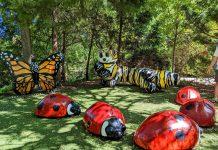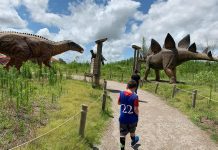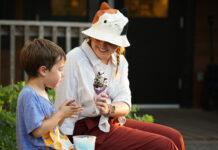Fall. The most perfect time of year. It is a time for flannels, pumpkin patch hopping, and picking apples from the orchards. I don’t know about you, but often I find myself “over-indulging” in fall fun and am left with an excess of fruits from the patches and orchards. Sure I can bake and carve almost any gourd or apple I bring home, but what else can be done? Well, have no fear! Your self-proclaimed Ms. Frizzle is here to share some exciting experiments to do with your harvest.
I could share a recipe for some pumpkin slime or how to make the perfect apple volcano, but instead I am going to focus on three educational activities using the scientific method. (Don’t get me wrong, you can use the scientific method with both of those activities!) A good scientist always uses the scientific method to help form hypotheses, run experiments, and come to conclusions. Good luck and have fun!
1.Do larger pumpkins have more seeds?
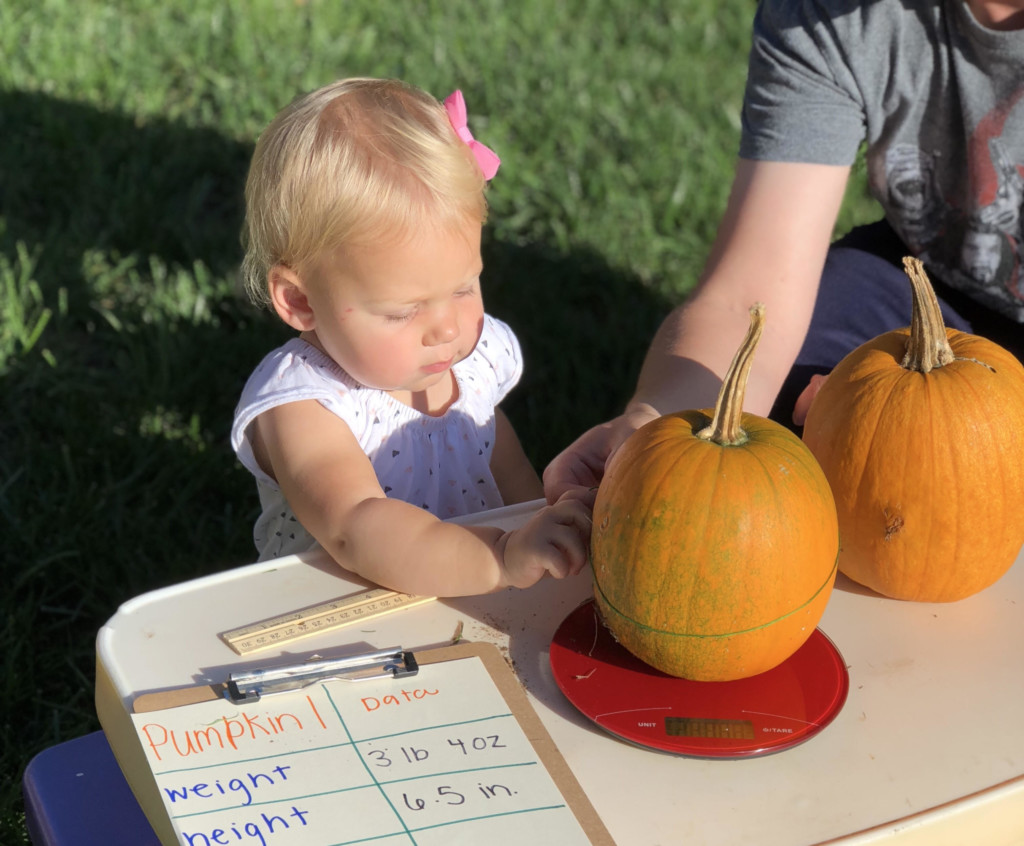 Materials Needed
Materials Needed
- 2 or more pumpkins
- Ruler or tape measure
- String
- Scale
- Baking sheet or ice cube trays to collect seeds
- Paper or poster board
- Writing Utensil
Instructions
1. Collect background information. Before researching, ask your child or children what they know about pumpkins and pumpkin seeds. Depending on the age of your child, you may want them to do their own research on pumpkins and pumpkin seeds. For our elementary students and younger, read How Many Seeds in a Pumpkin by Margaret McNamara and G. Brian Karas. (A link of a Youtube read aloud of the story is here.)
2. Make a hypothesis! Which pumpkin do they think has the most seeds and why?
3. Start your experiment by collecting and recording data. Before you open the pumpkin measure the weight, height (not including the stem), and circumference (use a string to measure the girth of the pumpkin, then match the length of the string to a ruler or tape measurer).
4. Open the pumpkin and start collecting data through scooping out pulp and finding seeds. Sort the seeds by 5s or 10s in an ice cube tray or on a baking sheet to help with counting accuracy.
Tip: use painters tape to break up the baking sheet into ten sections to help with counting in fives or tens.
5. Draw conclusions after all seeds are collected, counted, and recorded. Did the data align with the hypothesis?
2.Do apples sink or float?
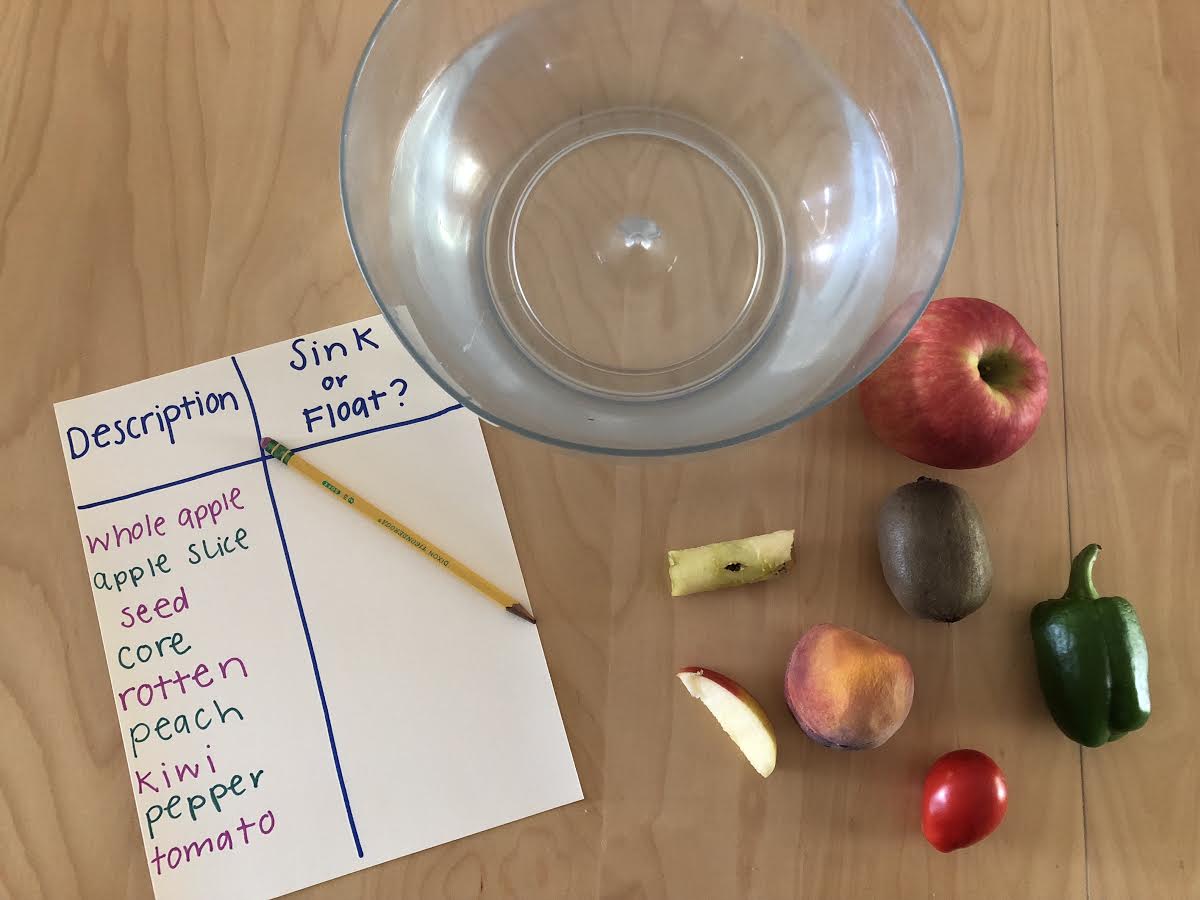
Materials Needed
- Apples (Any shape, size, or type)
- Bucket with water
- Paper and writing utensil
- Knife (for adults only)
Instructions
1.Collect background information. Activate prior knowledge by discussing with your children what kind of items they know that sink or float. Feel free to do some research about why these items sink or float prior to doing the experiment.
2. Make a hypothesis! Will the apples sink or float? Why? What if you cut an apple into slices? What if the apple is rotten or has a hole in it? Will different sizes of apples more likely sink than others?
3. Complete an experiment. While using a t-chart, write a description of the apple or part of the apple before submerging it in water (whole, yellow, slice, core, seeds, rotten, etcetera). After the apple is placed in the water, observe what happens and write it down next to the description.
Tip: If every part is floating compare it to any other fruits or gourds you have at home.
4. Draw conclusions: Did the data align with their hypothesis?
Follow up activity: Create apple boats with slices of apple, a toothpick, and paper sails!
3.How do different levels of force affect how far a gourd travels?

Materials Needed
- Gourds (or any other items collected)
- Tape measure
- Paper and writing utensil
- Catapult (My physics-loving husband created ours with materials in our garage, but check out this link to make your own.)
Instructions
1.Collect background information. Activate prior knowledge by asking your children how they get stationary things to move (example: a ball). I highly suggest having older children research Newton’s Laws of Motion, specifically the Second Law of Motion.
2. Make a hypothesis! Will a gourd go farther if more force is applied? What will happen if the same amount of force is used with a lighter or heavier gourd?
3. Complete the experiment. Go outdoors and use your catapult to launch different gourds into the air. Measure the distances with your tape measurer and record data on a piece of paper noting the type/size of gourd, the amount of force used, and the distance.
4. Draw conclusions: Did the data align with their hypothesis?
The final part of the scientific method is to share your findings. Please share your results with us at the Wichita Moms Blog by tagging us on Facebook, Twitter, or Instagram!
Make sure you never miss out on things to do in Wichita: subscribe to our weekly Wichita Moms Blog newsletter! Be the first to know about our exclusive events, special offers and discounts, neighborhood group activities and, of course, local resources and parenting voices powered by local Wichita moms!






